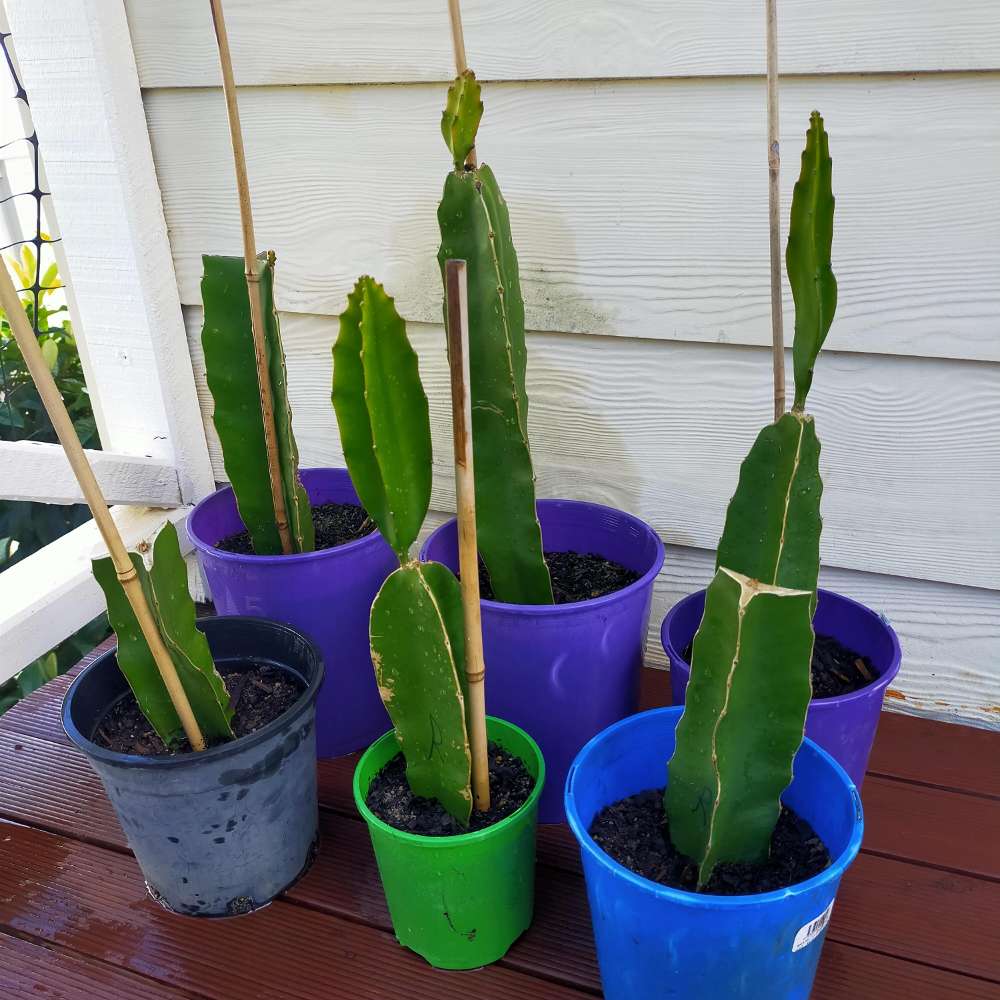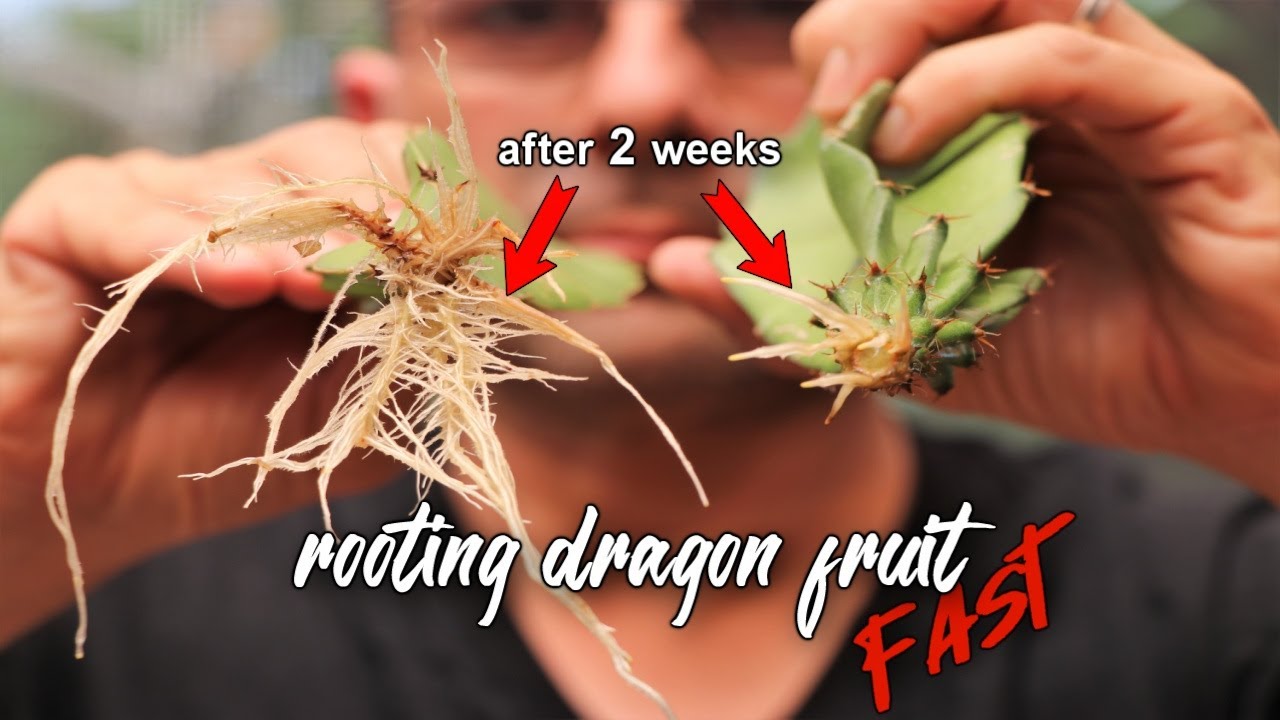To root dragon fruit cuttings, start by preparing a well-draining soil mix and making clean cuts on the cuttings.

Credit: dragonfruitobsession.github.io
How To Root Dragon Fruit Cuttings: A Step-by-step Guide
Gathering the necessary tools and materials is the first step in successfully rooting dragon fruit cuttings. Start by selecting healthy dragon fruit cuttings that are free from any signs of disease or damage. To ensure a successful rooting process, carefully choose cuttings with at least three mature segments.
| Necessary Tools and Materials |
|---|
| – Pruning shears or a sharp knife for cutting the dragon fruit |
| – Potting soil or a well-draining soil mix |
| – Small pots or containers for planting the cuttings |
| – A rooting hormone to promote root development |
| – Watering can or spray bottle to provide moisture |
| – A warm and well-lit location for the cuttings to root |
Once you have gathered the necessary tools and materials, it’s time to proceed with the rooting process. Following the right techniques will increase your chances of success. Remember to check the moisture levels regularly and avoid overwatering. After a few weeks, you should start to see roots developing, indicating that the dragon fruit cuttings have successfully rooted. At this point, you can carefully transplant the rooted cuttings into larger pots or directly into the garden, where they can continue to grow and thrive.
Preparing The Dragon Fruit Cuttings
To successfully root dragon fruit cuttings, it is important to assess the health of the cuttings. Look for any damaged or diseased parts on the cuttings and trim them off using a sharp, sterilized tool. This will prevent any potential issues from spreading to the newly rooted plants.
Once the cuttings are free from damage, the next step is to allow them to callus. This is a crucial step in the rooting process as it helps to prevent rot and promote healthy root development. Place the cuttings in a warm, dry location and allow them to air dry for a minimum of three days. The cut ends should develop a dry, cork-like texture before they are ready for rooting.
By carefully assessing the health of the cuttings and allowing them to callus properly, you can increase your chances of successful rooting and ensure the growth of strong and healthy dragon fruit plants.
Planting The Dragon Fruit Cuttings
To successfully root dragon fruit cuttings, it is essential to properly prepare the potting mix. Begin by selecting a well-draining mix that consists of equal parts sand, perlite, and peat moss. Avoid using heavy soils that can retain too much moisture, as this can lead to root rot. The potting mix should be slightly acidic, with a pH level ranging from 6 to 7.
Creating a suitable planting hole is crucial for the successful growth of dragon fruit cuttings. Dig a hole deep enough to accommodate the entire cutting, ensuring that it is slightly wider than the width of the cutting. This will allow for ease of planting and prevent the roots from being damaged during the process.
Once the hole is ready, insert the dragon fruit cuttings into the soil. Gently press the soil around the base of the cutting to secure it in place. Ensure that the cutting is stable and upright.
Providing support for the cuttings is important to prevent them from falling over or being damaged by strong winds. Insert a stake or a trellis near the cutting and use soft ties or string to secure the plant as it grows.
Caring For Rooted Dragon Fruit Cuttings
Once you have successfully rooted your dragon fruit cuttings, it is important to provide them with the right care to ensure their healthy growth. Maintaining the right temperature and lighting conditions is crucial for their overall well-being. Dragon fruit cuttings thrive best in temperatures between 65-75°F (18-24°C) and should be placed in a location that receives bright, indirect sunlight.
Proper watering is also essential for the rooted cuttings. They should be watered when the top inch of the soil feels dry. However, it is important to avoid overwatering as it can lead to root rot. Applying a balanced fertilizer every 4-6 weeks during the growing season can help provide the necessary nutrients for their development.
Lastly, protecting the cuttings from pests and diseases is important to prevent any potential damage. Regularly inspect the cuttings for signs of pests such as aphids or mealybugs, and take appropriate measures to control them if necessary. Additionally, maintaining a clean and well-ventilated environment can help prevent diseases.
Monitoring And Troubleshooting
One important aspect of rooting dragon fruit cuttings is to monitor their progress and troubleshoot any issues that may arise. Keeping a close eye on the cuttings is essential to ensure their successful rooting. Look for signs of growth such as the emergence of new roots or the development of new leaves. These are indications that the cuttings are successfully establishing roots. On the other hand, if there is no visible growth or the cuttings appear wilted or yellow, it may signify a problem that needs to be addressed.
Common issues that may arise during the rooting process include fungal or bacterial infections, inadequate moisture levels, and improper temperature conditions. To address these challenges, make sure the cuttings are placed in a well-draining soil mix and kept in a warm and humid environment. It’s also important to avoid overwatering or allowing the soil to dry out completely. By closely monitoring the progress of the dragon fruit cuttings and promptly addressing any issues, you can increase the chances of successful rooting.
Transplanting Rooted Dragon Fruit Cuttings
Assessing the readiness for transplanting is an important step in successfully rooting dragon fruit cuttings. Before transplanting, make sure that the cuttings have developed a strong root system. Look for multiple healthy roots and avoid transplanting cuttings that still have a weak or underdeveloped root system.
To prepare the new planting site, choose a location that receives adequate sunlight and has well-draining soil. Dragon fruit plants thrive in slightly acidic soil with a pH level between 6 and 7.
Gently remove the cuttings from the original container, being careful not to damage the roots. Hold the cutting near the soil level and gently pull it out, ensuring that the roots remain intact. Avoid handling the cuttings by the stem as it can cause damage.
Plant the cuttings in their new location, making sure to dig a hole large enough to accommodate the roots. Place the cutting in the hole and backfill with soil, gently pressing it down to stabilize the plant. Water thoroughly after planting to settle the soil and provide moisture to the newly transplanted cuttings.
Supporting And Training The Dragon Fruit Plants
Supporting and training the dragon fruit plants is essential for their optimal growth and fruit production. One way to provide support is by installing trellises or supports for the growing plant. This helps in keeping the plant upright and prevents it from sagging or breaking under its own weight as it grows.
Another important aspect is shaping and pruning the plant. Regular pruning promotes better air circulation and sunlight penetration, which in turn improves the overall health of the plant. It also helps in controlling the plant’s growth and encourages the development of more branches, which results in more fruits.
Monitoring the growth of the dragon fruit plants is crucial. As the plants grow, their support needs may change, and adjustments may be necessary. Checking the plant regularly and making necessary modifications to the support system ensures that the plant is adequately supported at all times.
Harvesting And Enjoying Dragon Fruit
Harvesting and enjoying dragon fruit is a delightful experience that showcases the flavorful and exotic nature of this tropical fruit. To fully enjoy the fruit, it is important to identify signs of ripeness. A ripe dragon fruit should have vibrant colors, ranging from bright pink to deep red, depending on the variety. The fruit should also feel slightly soft when gently squeezed, indicating that it is juicy and ready to be enjoyed.
When it comes to harvesting dragon fruit, it is best to cut the fruit from the plant rather than pulling or twisting it off. Using a sharp knife, make a clean cut at the base of the fruit to ensure minimal damage. After harvest, the dragon fruit can be stored in a cool, dry place or refrigerated for up to a week.
Preparing the fruit for consumption is simple and straightforward. Start by peeling the thin skin off the fruit to reveal the white or magenta flesh. The flesh can be sliced or scooped out, depending on personal preference. Dragon fruit can be enjoyed on its own, added to fruit salads, blended into smoothies, or used as a topping for desserts.
For those feeling adventurous, there are many creative ways to enjoy dragon fruit. It can be used in savory dishes like salads or grilled with meats for a unique flavor combination. The fruit’s vibrant color also makes it a visually appealing addition to cocktails and mocktails, adding a tropical touch to any drink.
Frequently Asked Questions For How To Root Dragon Fruit Cuttings
How Long Does It Take For Dragon Fruit Cuttings To Root?
Dragon fruit cuttings typically take about 2-3 weeks to root.
Why Are My Dragon Fruit Cuttings Not Growing?
Dragon fruit cuttings may not be growing due to improper care or unfavorable conditions. Ensure you provide adequate sunlight, well-draining soil, and regular watering without overwatering. Maintain a warm temperature and protect the cuttings from frost. Additionally, using a rooting hormone can aid in promoting growth.
How Long Does It Take For Dragon Fruit Cutting?
Dragon fruit cuttings typically take about 7-14 days to root.
How Long Does It Take For Dragon Fruit Cuttings To Root?
Dragon fruit cuttings typically take around 2 to 4 weeks to root. However, the exact timeframe can vary depending on various factors such as temperature, humidity, and the health of the cutting. It is important to provide optimal conditions and care to encourage successful rooting.
Conclusion
Rooting dragon fruit cuttings is a simple and rewarding process. By following the step-by-step instructions provided in this blog post, you can successfully propagate new plants and enjoy a bountiful harvest of this exotic fruit. Remember to choose healthy cuttings, provide the right conditions for root development, and be patient as the roots take hold.
With a little care and attention, you’ll soon be enjoying the sweet and succulent flavors of your homegrown dragon fruit. Happy gardening!

